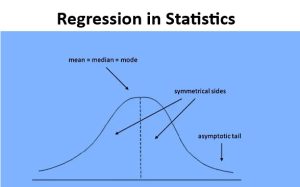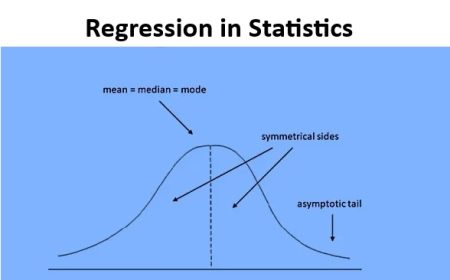Are you tired of guessing distances on the golf course or struggling to determine how far that target is during a hunting expedition? Look no further, because today we’re diving into the world of range finders! Whether you’re an avid golfer, a passionate hunter, or simply someone who loves outdoor activities, understanding what a range finder is and how to use it can revolutionize your performance. From laser precision to GPS accuracy, these devices are designed to take out the guesswork and provide accurate measurements at your fingertips. So let’s get started and discover everything you need to know about range finders – your secret weapon for pinpoint distance measurement!
Types of range finders (laser, GPS, optical)
When it comes to Range finders, there are a few different types available on the market. Each type has its own unique advantages and uses. Let’s take a closer look at the three main types: laser range finders, GPS range finders, and optical range finders.
Laser range finders use lasers to accurately measure distances. They emit a laser beam that bounces off the target and then measures the time it takes for the beam to return. This information is used to calculate the distance between you and your target. Laser range finders are popular among golfers, hunters, and outdoor enthusiasts due to their accuracy and ease of use.
GPS range finders rely on satellite technology to determine distances. They use signals from multiple satellites to triangulate your position and calculate distances based on coordinates. GPS range finders are often used in navigation systems or for mapping purposes.
Optical rangefinders work by using lenses or prisms to estimate distance based on visual cues such as size or angles. These types of rangefinders have been around for centuries and were traditionally used in surveying or military applications.
Each type of rangefinder has its own strengths depending on your specific needs. Whether you’re looking for precise measurements while hunting or accurate yardage calculations during a round of golf, there is a rangefinder out there that can help you get the job done effectively.
Choosing the right type of rangefinder will depend on factors such as your intended usage, budget constraints, and personal preferences. It’s always recommended to do some research before making a purchase so that you can select one that aligns with your requirements.
Benefits and uses of range finders
Range finders are versatile tools that offer a multitude of benefits and can be used in various situations. Whether you’re an avid golfer, a hunter, or simply someone who enjoys outdoor activities, a range finder can greatly enhance your experience.
One of the main advantages of using a range finder is its ability to accurately measure distances. This is particularly useful for golfers who need to assess the distance to the hole or obstacles on the course. By knowing how far away they are from their target, golfers can make better club selections and improve their overall game.
Hunters also benefit greatly from using range finders. They allow hunters to determine the distance between themselves and their prey, helping them make more precise shots. This not only increases accuracy but also ensures ethical hunting practices by minimizing unnecessary suffering.
Additionally, range finders are invaluable tools for outdoor enthusiasts such as hikers and campers. They enable these individuals to measure distances between landmarks or campsites, ensuring they stay on track during their adventures.
Furthermore, range finders have applications beyond sports and outdoor activities. They can be utilized in construction projects for measuring distances between objects or determining heights. Photographers often use range finders to calculate focal lengths when capturing images.
In conclusion (not conclusive), the benefits and uses of range finders are numerous across various fields and activities ranging from sports like golfing to hunting expeditions or even photography projects! Their accurate measurement capabilities provide valuable information that enhances performance while ensuring safety and precision in different contexts! So why not consider investing in a quality range finder today? You won’t regret it!
Step-by-step guide on how to use a range finder
Step 1: Familiarize Yourself with the Range Finder
Before using a range finder, it’s important to understand its features and functionality. Take some time to read the user manual and get acquainted with all the buttons, settings, and modes available on your particular device.
Step 2: Prepare Your Range Finder for Use
Make sure your range finder is fully charged or has fresh batteries installed. Adjust any necessary settings such as units of measurement (yards or meters) or mode options (such as slope compensation).
Step 3: Aim at Your Target
To measure distance accurately, aim the range finder directly at your target. Look through the viewfinder or display screen and align the crosshairs with your desired point of measurement.
Step 4: Activate Measurement Mode
Most range finders have a dedicated button or switch to activate measurement mode. Press this button once you have aimed at your target, and wait for a reading to appear on the display.
Step 5: Interpret Results
Once you receive a measurement reading on your range finder’s display, take note of it. Some devices may also provide additional information such as angle compensation or elevation adjustment suggestions.
Remember that different types of range finders may have slightly different operating procedures, so always refer to the manufacturer’s instructions for specific guidance. With practice and familiarity, using a range finder will become second nature!
Tips for accurate distance measurement
When using a range finder, it’s important to ensure that you are getting accurate distance measurements. Here are some tips to help you achieve precise results:
1. Calibrate your range finder: Before each use, make sure to calibrate your device as per the manufacturer’s instructions. This will ensure accuracy and consistency in your measurements.
2. Steady your hand: To get an accurate reading, it’s crucial to keep your hand steady while aiming the rangefinder at the target. Avoid any unnecessary movements or shaking.
3. Choose the right mode: Depending on the type of range finder you have, there may be different modes available such as slope compensation or scan mode. Selecting the appropriate mode for your needs will help improve accuracy.
4. Consider environmental factors: Environmental conditions like fog, rain, or bright sunlight can affect distance readings. Take these factors into account and adjust accordingly if needed.
5. Aim for reflective targets: When measuring distances, try to aim for objects that are highly reflective such as buildings with glass windows or metallic surfaces. These targets tend to provide more reliable readings.
6. Practice proper targeting technique: Ensure that you are aligning the crosshairs of the range finder accurately with your desired target point before taking a measurement.
By following these tips, you can enhance the accuracy of your distance measurements and make better-informed decisions on the field!
Conclusion
In a world where precision and accuracy are crucial, range finders have become an indispensable tool for various activities such as hunting, golfing, surveying, and even photography. These devices offer the convenience of measuring distance with just a few clicks or button presses.
Whether you opt for a laser range finder, GPS range finder, or optical range finder, each type has its own unique features and benefits. Laser rangefinders provide accurate measurements using laser beams to calculate distances. GPS rangefinders utilize satellite technology to determine precise measurements based on your location. Optical rangefinders use lenses to estimate distances by focusing on the target.
The benefits of using a range finder are countless. They save time and effort by eliminating guesswork when it comes to estimating distance. Whether you’re trying to hit that perfect tee shot or plan out your next hiking expedition, having accurate distance measurements can greatly improve your performance.
To get started with using a range finder effectively:
1. Familiarize yourself with the device’s buttons and functions.
2. Select the appropriate mode for your activity (e.g., golf mode for golfing).
3. Aim at the target and press the button to measure distance.
4. Take multiple readings from different angles for more accuracy.
5. Use additional features like slope adjustment if available.
To ensure accurate distance measurement:
1. Consider weather conditions as they can affect results.
2. Avoid shaky hands by stabilizing yourself before taking a reading.
3. Take note of reflective surfaces that may interfere with laser readings.
4 . Practice regularly to develop proficiency in using your chosen device.
When purchasing a range finder:
1 . Consider factors like maximum range, magnification level, battery life,and durability
2 . Read customer reviews online or consult experts for recommendations
3 . Determine which features are essential based on your needs
4 . Settle on a budget but be willing to invest in quality equipment
Range finders are invaluable tools that provide accurate and reliable distance measurements.






